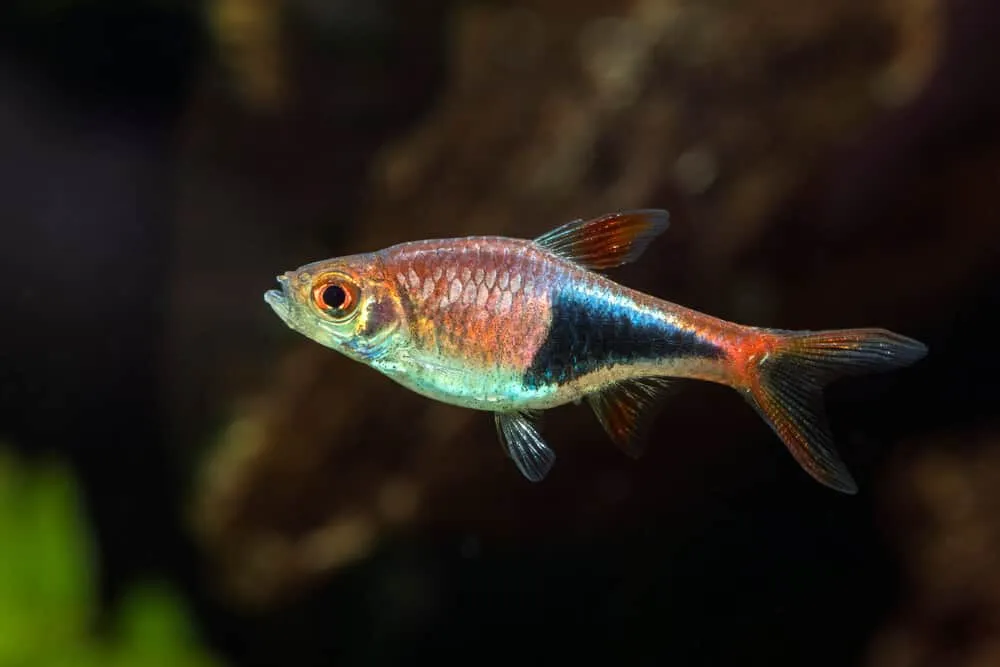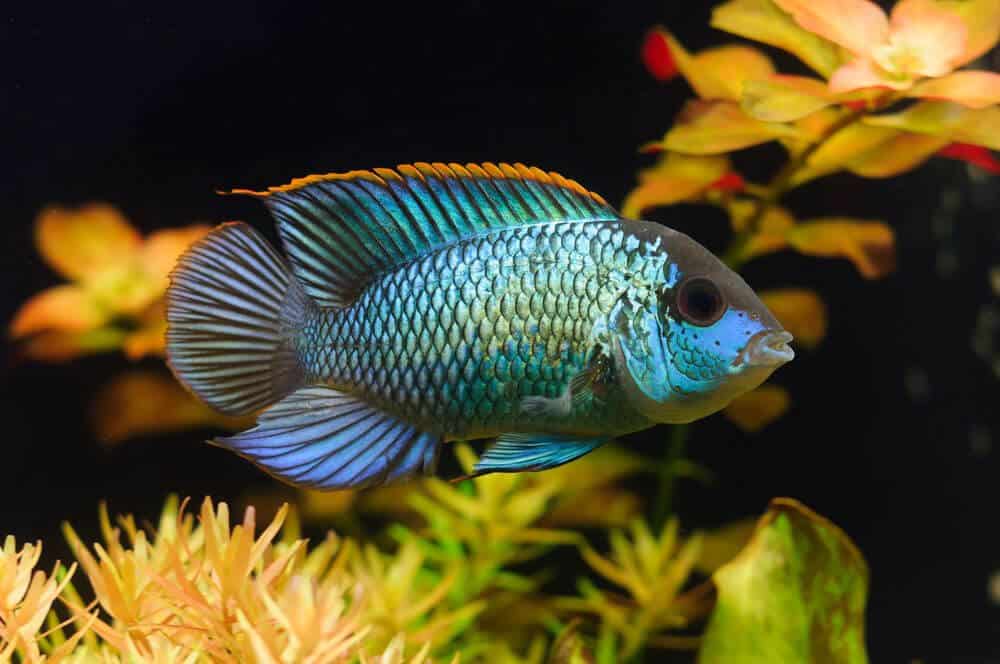In this article, we will explore the fascinating world of Molly Fish and discover the telltale signs that can help you determine if your fishy friend is pregnant. From their behavior to physical changes, we will discuss the various ways to determine if a Molly Fish is expecting. So, if you are curious about the miracle of life in the underwater realm, read on to learn how you can spot the signs of a pregnant Molly Fish.
Physical Signs
Changes in Body Shape
One of the most obvious physical signs that a Molly fish is pregnant is a change in body shape. As the fish progresses through its pregnancy, you will notice a significant increase in the size of its abdomen. The once slim and streamlined body shape of the fish will become rounder and more bulging as the fry grow inside.
Enlarged Abdomen
The enlarged abdomen is a telltale sign of pregnancy in Molly fish. It will appear noticeably larger and fuller compared to the rest of the body. The belly may become rounder and more defined, giving the fish a pregnant appearance.
Darkened Gravid Spot
Another physical sign to look out for is a darkened gravid spot. Located near the rear of the female Molly fish, the gravid spot is a small, dark patch. During pregnancy, this spot may become more prominent and darken in color. It is caused by the developing eyes of the fry being visible through the translucent body of the female fish.
Swelling of the Vent
Pregnant Molly fish may also exhibit swelling of the vent, which is the opening used for reproduction and waste elimination. This swelling can be attributed to the growing fry and the physical changes that occur during pregnancy.
Visible Eyes
As the fry inside the Molly fish develop and grow, their eyes become visible through the transparent body of the female fish. This can be observed as small black dots moving inside the abdomen of the pregnant fish. The visibility of the fry’s eyes is a definite sign of pregnancy.
Increased Appetite
A pregnant Molly fish’s appetite will often increase as she prepares for the arrival of fry. You may notice her eating more frequently and showing a greater interest in food. This increased appetite is a result of the extra energy required to sustain both the mother and the developing fry.
Behavioral Signs
Aggression
During pregnancy, Molly fish may exhibit increased aggression towards other tankmates, particularly if they feel threatened or stressed. This aggression can manifest as chasing, nipping, or flaring fins. It is essential to monitor the behavior of pregnant Molly fish and provide them with a stress-free and peaceful environment.
Hiding
Pregnant Molly fish may also display hiding behavior as they seek out secluded spots in the tank. This behavior is an instinctual response to protect themselves and their fry. Creating hiding places or providing plants and decorations in the tank can help pregnant Molly fish feel secure and reduce their stress levels.
Restlessness
Restlessness is another behavioral sign that may indicate pregnancy in Molly fish. Pregnant females may constantly move around the tank, exploring different areas and seeking out the most suitable spot for giving birth. This restlessness is a result of the fish’s natural instincts to find a safe and comfortable location for the upcoming delivery.
Nesting Behavior
Molly fish exhibit nesting behavior during the final stages of pregnancy. The female will actively search for suitable places in the tank to give birth and protect her fry. This behavior involves inspecting various nooks, crannies, or dense plant growth where the fry can find shelter. Providing artificial plants or floating objects in the tank can simulate natural nesting spots for the pregnant Molly fish.
Tank Conditions
Separate Breeding Tank
To ensure the well-being of the pregnant Molly fish and her fry, it is recommended to provide a separate breeding tank. This tank should be adequately sized and equipped with suitable filtration and heating systems. A breeding tank allows for better control over water conditions and reduces the chances of the fry being eaten by other tankmates.
Favorable Water Parameters
Maintaining favorable water parameters is crucial for the health of pregnant Molly fish. Keep the water temperature between 75°F and 82°F (24°C and 28°C) and maintain a pH level around 7.2 to 7.5. Regular water testing and keeping ammonia, nitrite, and nitrate levels in check are also essential to promote a healthy environment for the pregnant fish and the fry.
Visual Obstacles
To provide a stress-free environment for pregnant Molly fish, it is recommended to include visual obstacles in the tank. These can be in the form of plants, decorations, or floating objects that create hiding spots and break up lines of sight. Visual obstacles help reduce aggression and provide pregnant fish with areas to retreat and nest.
Observations During Breeding
Courtship Behavior
Before breeding occurs, Molly fish engage in courtship behavior. This behavior involves the male displaying vibrant colors, flaring his fins, and chasing the female. The female may also respond by swimming in an enticing manner. Courtship behavior is the initial step in the breeding process and is a clear indication that mating may occur soon.
Mating
During mating, the male Molly fish will position himself alongside the female and wrap his body around her. The male will then use his gonopodium, a modified anal fin, to transfer sperm into the female. This process typically occurs quickly, and multiple matings may take place over a short period.
Egg-Laying
After mating, the female Molly fish will proceed to lay the fertilized eggs. She may display nesting behavior, searching for suitable spawning sites in the tank. Once she finds a suitable location, usually near vegetation or a low-lying surface, she will release the eggs and attach them to the surface. The eggs will then hatch after a gestation period, releasing the fry into the water.
Examination of Behavior and Appearance
Flashing
Flashing refers to a behavior where a fish rubs itself against the tank or other surfaces. Pregnant Molly fish may exhibit flashing behavior due to discomfort caused by the growing fry or other factors. If you observe frequent flashing, it is essential to ensure proper water conditions and check for any signs of illness or parasites affecting the fish.
S-Shaped Swimming
Pregnant Molly fish may display an S-shaped swimming pattern, especially during the later stages of pregnancy. This swimming behavior occurs as the fish’s body bulges with the growing fry. The S-shaped swimming is a natural response to accommodate the increased weight and size of the abdomen.
Breathing Difficulty
As the pregnancy progresses, some Molly fish may experience breathing difficulty. This can be attributed to the increased size of the abdomen, which may impose pressure on the fish’s internal organs, including the gills. Ensure that the tank environment provides optimal oxygenation and consider gentle aeration or water movement to alleviate breathing difficulties.
Change in Appetite
A change in appetite is another significant observation during pregnancy in Molly fish. While some pregnant females may exhibit an increased appetite, others may show a decrease in their interest in food. Monitor the fish’s feeding patterns and adjust accordingly to provide the necessary nutrients for both the mother and the developing fry.
Loss of Fins or Scales
In some cases, pregnant Molly fish may experience fin or scale loss during the birthing process. This can be due to the physical strain on the fish’s body as she gives birth. While minor fin or scale loss is generally not a cause for concern, closely monitor the condition of the fish and provide proper care to promote healing and prevent infection.
Comparison to Other Fish
Size Difference
Compared to other non-pregnant female Molly fish or male fish, pregnant females can exhibit a notable size difference. The enlarged abdomen and increased body volume make them appear larger and more rounded.
Distinct Physical Appearance
Pregnant Molly fish may have a distinct physical appearance that sets them apart from non-pregnant fish. Look for the signs mentioned earlier, such as an enlarged abdomen, darkened gravid spot, and visible fry eyes. These physical characteristics will help you identify the pregnant Molly fish in the tank.
Confirmation through Ultrasound
Consulting a Veterinarian
If you want to confirm the pregnancy of your Molly fish definitively, consult a veterinarian experienced in fish care. A veterinarian may use ultrasound technology to detect and visualize the developing fry inside the fish’s abdomen. This method provides accurate confirmation and can give you a better idea of the fetal development stage.
Identification of Fetal Development
Through ultrasound examinations, a veterinarian can identify the development stage of the fry inside the pregnant Molly fish. This information can be essential in determining the approximate time of birth and preparing for the arrival of the fry.
Gestation Period
Average Duration
The gestation period for Molly fish typically ranges from 4 to 6 weeks. However, the exact duration can vary based on factors such as water temperature, genetics, and the overall health of the fish. Monitoring your pregnant Molly fish closely will give you a better understanding of the specific gestation period for your individual fish.
Variations in Gestation Period
It is important to note that there can be variations in the gestation period of Molly fish. Some individual fish may carry their fry for shorter or longer durations compared to others. These variations are normal and influenced by factors such as genetics and environmental conditions.
Preparing for Fry Birth
Separating Pregnant Fish
As the pregnant Molly fish approaches her due date, consider separating her from other tankmates. This will help prevent stress, aggression, and potential harm to the fry. Prepare a separate birthing tank with suitable water conditions and provide a stress-free environment for the upcoming birth.
Creating a Fry-Safe Environment
Within the birthing tank, create a fry-safe environment for the newly born fish. This can be accomplished by incorporating floating plants, specially designed fry nets, or other suitable materials that allow fry to seek shelter and avoid predation. Ensure proper filtration, minimal water flow, and appropriate food availability for the fry’s initial stage of life.
Post-Birth Care
Separating Fry
Once the fry are born, it is crucial to separate them from adult fish. Adult fish may see the small fry as potential prey and may attempt to eat them. Transfer the fry to a nursery tank to provide them with a safe and secure environment to grow and develop.
Placing in Nursery Tank
The nursery tank should be appropriately sized and have a stable and suitable environment for the fry. Maintain optimal water conditions, including temperature, pH, and water quality. Provide hiding spots, such as dense vegetation or purpose-made fry shelters, to give the fry a place to hide and grow.
Providing Proper Nutrition
To ensure the healthy growth and development of the fry, offer them suitable nutrition. Newly hatched brine shrimp, finely crushed flake food, or commercially available fry food can be fed to the fry multiple times a day. Monitor their feeding habits and adjust the quantity and frequency as needed.
Maintaining Water Quality
Maintaining excellent water quality is crucial for the health and survival of the fry. Regularly test the water parameters, perform water changes as necessary, and closely monitor ammonia, nitrite, and nitrate levels. Consistent maintenance of water quality will help prevent stress and disease, ensuring optimal growth and survival of the fry.
In conclusion, being able to identify the signs of pregnancy in Molly fish is crucial for proper care and preparation for the arrival of the fry. By observing physical changes, behavioral cues, and tank conditions, you can create an environment that supports the mother and ensures a safe and healthy environment for the developing fry. Remember to consult a veterinarian for confirmation and advice, and provide post-birth care to maximize the chances of survival for the new fry. With careful attention and proper care, you can witness the remarkable process of Molly fish reproduction and enjoy the excitement of welcoming new additions to your aquarium.





